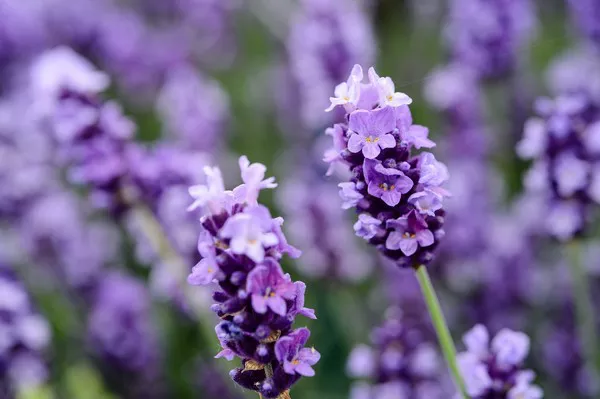Lavandula, commonly known as lavender, is a flowering plant cherished for its fragrant blooms, medicinal properties, and ornamental value. The allure of lavender lies not only in its captivating aroma and delicate appearance but also in its relatively long blooming period. In this article, we delve into the intriguing world of lavender flowers, exploring their lifespan, factors influencing their duration, and essential care tips to ensure a prolonged flowering season.
1. The Lifecycle of Lavender Flowers: From Bud to Bloom
The lifespan of lavender flowers is a subject of interest for gardeners, florists, and enthusiasts alike. Lavender, belonging to the Lamiaceae family, undergoes a distinct lifecycle, encompassing various growth stages that contribute to its overall flowering duration.
Germination and Seedling Stage: Lavender begins its journey as a tiny seed. The germination period varies depending on factors such as temperature, humidity, and soil conditions. Under ideal circumstances, lavender seeds germinate within one to three weeks. After germination, seedlings require nurturing care, including sufficient sunlight and well-draining soil.
Vegetative Growth: During the initial months, lavender focuses on developing a robust root system and healthy foliage. This growth phase is crucial for establishing the plant’s foundation and preparing it for the blooming stage.
Bud Formation: Lavender plants typically form buds in their second year of growth, although this timeline can vary based on species and growing conditions. The buds, often referred to as calyces, hold the promise of vibrant blooms.
Blooming Stage: Lavender’s blooming season is a breathtaking spectacle. The plant produces spikes adorned with tiny florets in shades ranging from pale pink and violet to deep purple. The blooming period can last for several weeks, with individual flowers opening sequentially along the spike, ensuring a prolonged display of color and fragrance.
Post-Bloom and Pruning: Once the flowering season concludes, lavender enters a phase where spent flowers transform into seed heads. Pruning plays a crucial role during this stage, as proper trimming encourages the plant to allocate resources towards new growth rather than seed production.
Dormancy and Rest: As the growing season ends, lavender shifts into a period of dormancy, particularly in regions with colder climates. During this phase, the plant conserves energy and prepares for the upcoming spring by reducing its metabolic activities.
2. Factors Influencing Lavender’s Flowering Duration
Understanding the factors that influence the flowering duration of lavender is essential for cultivating healthy and thriving plants.
Climate and Growing Conditions: Lavender is native to the Mediterranean region, making it well-suited for warm and sunny climates. Adequate sunlight, well-draining soil, and minimal humidity are critical for its optimal growth and extended blooming period.
Lavender Species and Varieties: Different lavender species and varieties have varying blooming characteristics. Some species, such as Lavandula angustifolia, are known for their prolonged blooming periods, while others, like Lavandula stoechas, may have shorter flowering spans.
Pruning Practices: Pruning not only enhances the plant’s shape and appearance but also influences its flowering duration. Regular deadheading – the removal of spent flowers – encourages the plant to redirect energy towards producing new blooms rather than seed production.
Soil Quality and Drainage: Lavender thrives in well-draining soil. Excess moisture around the roots can lead to root rot and hinder blooming. Amending soil with sand or gravel and ensuring proper drainage can contribute to a healthier and longer flowering period.
Fertilization: Lavender is a relatively low-nutrient plant. Excessive fertilization can result in excessive foliage growth at the expense of flowers. A balanced approach to fertilization, avoiding excessive nitrogen, is recommended for optimal blooming.
Pest and Disease Management: Proper care to prevent pest infestations and disease outbreaks is vital. Aphids, spider mites, and fungal infections can impact the plant’s overall health and flowering duration.
3. Tips for Prolonging Lavender’s Flowering Season
To extend the flowering season of your lavender plants and revel in their beauty for as long as possible, consider these essential care tips:
Choose the Right Location: Plant lavender in a sunny spot with well-draining soil to mimic its natural habitat and encourage healthy growth.
Prune Regularly: Deadhead spent flowers to promote continuous blooming and prevent energy wastage on seed production.
Timing Matters: Prune after the flowering season to shape the plant and remove any woody growth, promoting new shoots for the next year.
Water Wisely: Lavender is drought-tolerant once established. Water deeply and infrequently to prevent overwatering, which can lead to root issues.
Mulching: Apply a layer of mulch around the base of the plant to retain moisture and regulate soil temperature.
Fertilize Sparingly: Use a balanced, low-nitrogen fertilizer sparingly to provide essential nutrients without promoting excessive foliage growth.
Monitor for Pests and Diseases: Regularly inspect your plants for signs of pests or diseases and take prompt action if needed.
Consider Your Climate: If you’re in a colder climate, consider planting lavender in pots that can be brought indoors during the winter to protect the plant from harsh conditions.
Conclusion
Lavender’s enchanting blooms have captivated humanity for centuries, gracing gardens, homes, and products with their aromatic presence. Understanding the lifecycle of lavender flowers, the factors impacting their flowering duration, and the necessary care practices can empower enthusiasts to cultivate thriving lavender plants with extended blooming seasons. By embracing the art of cultivation and nurturing, individuals can create landscapes that are not only visually appealing but also rich in the soothing essence of lavender.


